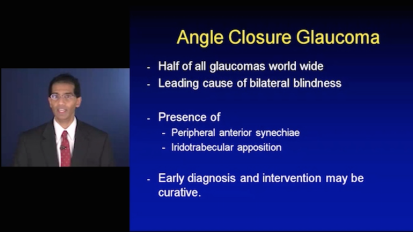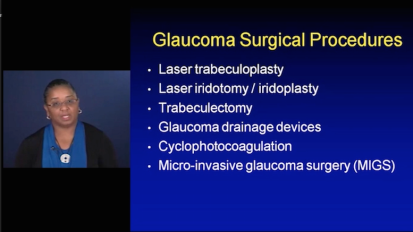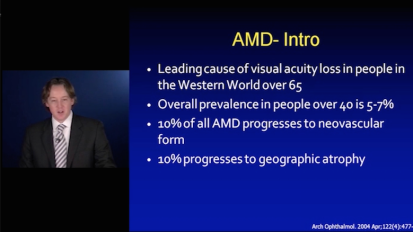In this video Chair of the Department of Ophthalmology at Penn Medicine, Joan O’Brien, MD, discusses malignant ocular melanoma, a rare disease associated with high mortality and morbidity. Dr. O’Brien discusses recent advances in our understanding of the genetics of ocular melanoma, and how this information is permitting personalized approaches to the treatment of this disorder.
This video was produced for The Scheie Eye Institute Best Practices in Ophthalmology series by CMEinfo, a registered trademark of Oakstone Publishing, LLC, Birmingham, AL . The complete video may be ordered here
Related Links
[MUSIC PLAYING] JOAN O'BRIEN: I'm going to speak now about malignant melanoma of the eye. What is ocular melanoma? It's the most common form of primary adult eye cancer. It involves the pigmented portions of the eye, the iris, the choroid, and the ciliary body. It's also known as uveal melanoma, as these pigmented portions of the eye are called the uveal tract. The presence of ocular melanoma occurs most commonly in those with fair skin and blue eyes. There are 7.5 cases per million in Europe and the United States. Among people aged 50 plus, cases increased to 21 per million people. What are the questions on progression of ocular melanoma? Here is a patient I saw in July, 2007. Two months later, the tumor was much enlarged, had more orange pigmentation, and progressed from a tumor I was worried about, because I saw the patient two months later, to clearly a melanoma with growth. It was treated in September of 2007. The SEER data, which is US Surveillance, Epidemiology, and End Results Program, which was evaluated by Singh colleagues, show survival rates with uveal melanoma in the United States have not improved from 1973 through 1997. They looked at 2,054 patients with uveal melanoma. Although the proportion treated with radiation increased from two to 28% in 20 years, the mortality was not affected, remaining essentially unchanged from 77 to 84%, which is not a statistically significant variation. Distinct genetic alterations exist in uveal melanoma, compared to cutaneous melanoma. BRAF mutations are more common in cutaneous melanoma. Recently, we've identified mutations in signaling proteins, GNAQ and GNA11 as early or initiating events in ocular melanoma. And these are studies performed in collaboration with Boris Bastian at UCSF. GNAQ mutations cause a change in guanine nucleotide-binding protein alpha-q. This signaling protein activates the MAP kinase pathway, which is the same pathway which is activated through a different mechanism in cutaneous melanoma. This has broad implications for targeted treatment. So here is the MAP kinase pathway. And this is, as you can see at the end, MEK and ERK. And inhibitors of these downstream effectors of the pathway could turn off this pathway, which is continuously turned on by mutation. Activating mutations result in constitutive pathway activation, as I said, and mitogen-independent, hyperplastic growth, which is diagnostic for cancer. RAS or RAF mutations activate the pathway in 100% of cutaneous melanoma. In contrast, RAS and RAF mutations are absent in uveal melanoma. But GNAQ is a RAS-like GTPase that transduces receptor signals to a variety of pathways, including that same MAP kinase pathway that ends with MEK and ERK, as its downstream effectors. MAP kinase is a rational drug target. Several MAP kinase pathway inhibitors are already approved or in clinical trials. They're highly selective inhibitors of mutant RAF. And they are in development for cutaneous melanoma, but would not apply to uveal melanoma. Mutant GNAQ itself could be selectively targeted, or GNA11 itself. And elucidating specific mechanisms of GNAQ activation of the MAP kinase pathway and other pathways could identify additional drug targets. So my experiences is that basic science discoveries are translating into clinical trials within about a two year period. Personalized medicine will target molecular pathway alterations. This will allow for prolonged survival for patients with metastatic uveal melanoma and many other cancers. Ocular melanoma, in summary, is the most common form of adult eye cancer. GNAQ and GNA11 are RAS-like GTPases identified by us in conjunction with Boris Bastian's lab that active MAP kinase pathway. And they can be inhibited through the use of MEK inhibitors. Personalized medicine will target molecular pathway alterations in the next few years. And they will be used to identify patients who have particular pathway alterations that can be identified and then used to provide very targeted treatment unique to their own tumors. Thank you.








